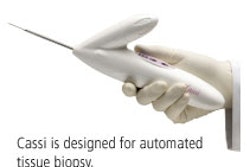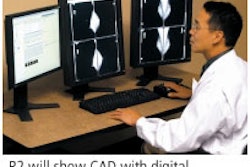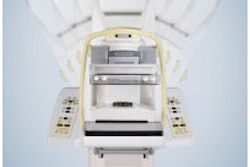CHICAGO - Full-field digital mammography (FFDM) is just as good as film-screen mammography (FSM) when it's taken on the road in a mobile unit, according to a presentation Tuesday at the RSNA meeting.
Dr. Mary Kelly and colleagues compared the medical audits for mobile FFDM and FSM, as well as a fixed-site FSM and FFDM, at the Swedish Medical Center in Seattle.
"We've had a mobile mammogram screening program for about 11 years," Kelly explained. "These programs have the potential to reduce breast cancer morbidity and mortality by improving access to screening for rural women, busy women in the workplace, and also medically underserved populations."
Kelly said her institution decided to combine the mobile program with FFDM to "avail ourselves of state-of-the-art technology." Other possible advantages included ease of image handling and improved financial performance through increased patient volume, she added.
The FFDM equipment used in this study was from Hologic of Bedford, MA. Kelly, as well some of her co-authors, are unpaid members of Hologic's scientific advisory board.
In 2004, 13,670 screening mammograms were performed at the Comprehensive Breast Center and these were categorized into three groups. Group A was made up of 947 FFDM scans done in a medical coach traveling in western Washington. Group B consisted of 6,408 FSM scans also performed in mobile units. Finally, group C had 6,315 mammograms performed at the breast center on FSM and FFDM units.
The same technologists performed the exams, and the same group of radiologists interpreted them using a computer-aided detection (CAD) system. Images were transmitted back to the breast center either via a laptop or a satellite system, which cost $14 per case.
The following parameters were compared: recall rates, BI-RADS categories, positive predictive value (PPV) for screening, number of cancers found, and cancer rate per 1,000.
According to the results, recall rates for all groups were similar: 18% for groups A and C and 17% from group B. However, incidence of cancer and BI-RADS assessment was higher for group C than group A or B. For example, in group A, 3% of the found cancers were given a BI-RADS 2 versus 2.5% in group B and 8% in group C.
The PPV in group A was 2.2% with 4.2 cancers per 1,000. In group B, the PPV was 2.5% with 4.3 cancers per 1,000 found. In group C, PPV was 6.3% with 6.3 cancers per 1,000 found.
"The performance measures of mobile digital screening are similar to mobile film screening and a breast center combination of both modalities," Kelly concluded. "Follow-up (research) is indicated to test whether, with increasing numbers, superior performance is observed with digital versus film-based screening in the mobile setting. Diffusion of digital mammography into mobile screening programs seems appropriate, offering logistical advantages and making mobile programs more viable."
Session moderator Dr. Laurie Fajardo questioned whether the $14 per case satellite transmission fee could be a barrier to offering FFDM in a mobile environment.
"I think you do need institutional and philanthropic support," Kelly said. "Our institution decided to go ahead and subsidize that."
By Shalmali Pal
AuntMinnie.com staff writer
November 29, 2005
Related Reading
Internet reliable enough to transmit digital screening mammography scans
DMIST study: Younger women may benefit most from digital mammo, September 16, 2005
Harnessing technology, training to make the most of FFDM, October 3, 2005
Do DMIST results underestimate FFDM's impact? October 24, 2005
Copyright © 2005 AuntMinnie.com



















